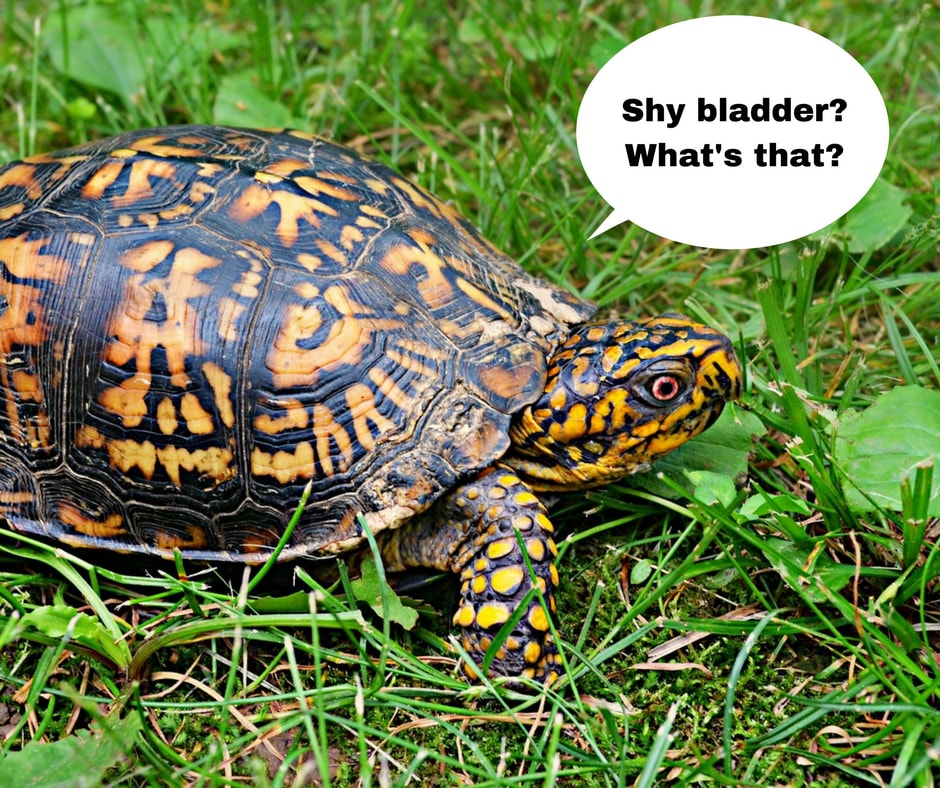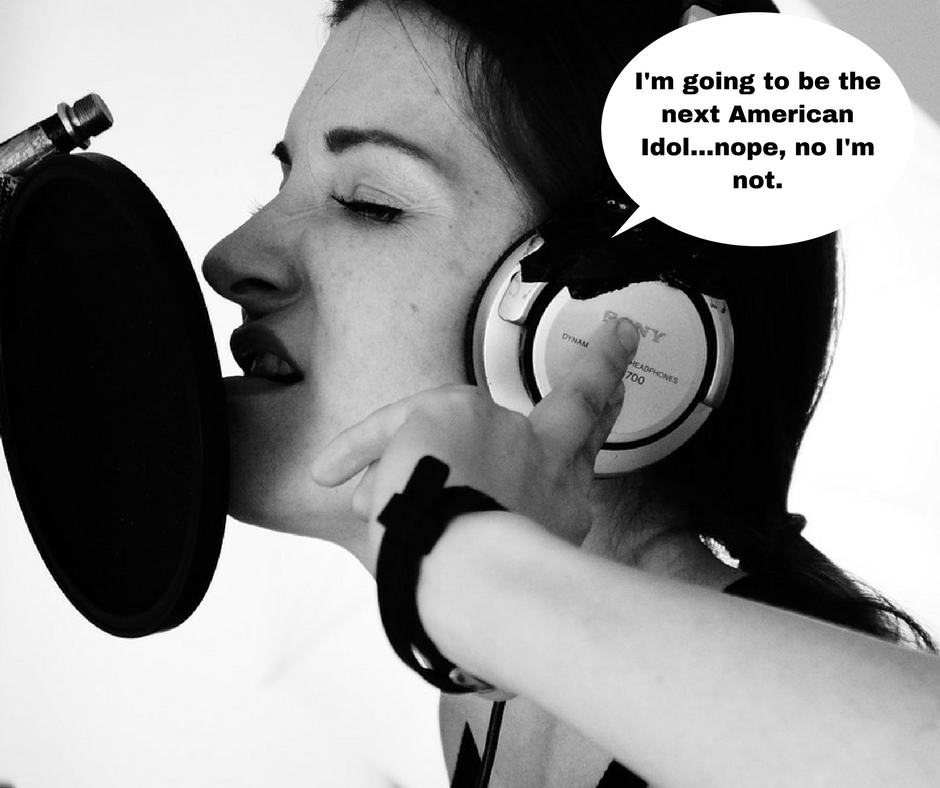When I was a six-year-old kindergarten student, I decided (and my parents somehow permitted me) to take a box turtle I found in my backyard to school for Show and Tell.
As I rode the bus to school, I was quite excited to show my classmates my new pet. The turtle was even more excited, apparently. As we pulled up to the school, it peed on my lap.
Moments later, as I shyly stood at the front of the class, my fellow six-year-olds were more interested in the wet spot on the front of my jeans than they were in my turtle.
“It was the turtle,” I told them to laughter. “Really! That’s why I’ve named him Leaky.”
However, no matter how much I told them, they remained unconvinced. Then, as if on cue, Leaky started peeing again.
“See!” I showed them excitedly. “It was Leaky!”
My audience was persuaded.
As I stood there, smiling from ear to ear, covered in turtle urine, paying no attention to my scowling teacher, I realized that although the event was called Show and Tell, there was a distinct difference between the two.
Years later, I thought of Leaky as I sat in my freshman composition class looking at a narrative essay that had just been returned to me. It was drenched in red ink. Scrawled in big block letters at the top of the page were the words “SHOW DON’T TELL!”
These infamous words have been uttered to every young writer at some point or another, yet putting them into practice is easier said than done.
So let’s learn how to show don’t tell in your narrative essay.
What Is a Narrative Essay?
A lot of digital ink has been spilled over the years here at the Kibin blog on the subject of narrative essays. So there are plenty of resources to check out if you’re not sure where to start. Moreover, there are hundreds of narrative essay examples in our database.
Today’s post will be less about how to write a narrative essay and more about how to improve your narrative essay.
A narrative essay is all about telling a story. The key is to pick a story that taught you a lesson and led to personal growth. Then, through the narration of your experience, you can attempt to pass along some of that knowledge to your reader.
You may have a funny story about your cat, but it won’t make for a good narrative essay if there’s no lesson to be learned.
On the other hand, a story about a box turtle with bladder control issues that taught you how to be a better writer has the makings of narrative essay gold.
Show Don’t Tell: Why Showing Is Better Than Telling
So let’s take another look at the story I wrote in the introduction. When I wrote it, I wasn’t really focusing on showing instead of telling, honestly.
I was mostly just trying to write a good hook that would relate to both narrative essays and the idea of show don’t tell.
However, if I were going to use that story in a narrative essay, I would want to do so in a way that was more compelling. And that’s really the importance of showing over telling.
I can tell you that I was excited for Show and Tell. Or I can show you that my heart rate increased, and my legs started bobbing up and down under the desk as I waited for my turn.
See the difference?
I still let the readers know that I was excited, but I did so in a way that allows them to visualize it in their minds.
Showing your readers what happened paints a picture that’s much more compelling than just telling them what happened.
So let’s take another look at my introduction story and see how I can do a better job of showing.
Ways to Show More and Tell Less
While you should try to show not tell when writing your first draft, it’s important that you take the time after writing it to examine how you can improve it further.
Writers often don’t realize they are telling as opposed to showing until they reread an early draft. It’s kind of like how you don’t realize how badly you’re singing until you record your voice and listen to it.
So it’s important to keep in mind the concept of show don’t tell during the writing process but especially during the revision process.
There are several ways you can do this. So let’s take a closer look at how we can improve my story from earlier.
Use dialogue
When I was a six-year-old kindergarten student, I decided (and my parents somehow permitted me) to take a box turtle I found in my backyard to school for show and tell.
One easy way to show your story is to use dialogue. There’s nothing wrong with the above sentence, but wouldn’t it be more engaging if the reader could experience that conversation with my mother?
When I was a six-year-old kindergarten student, I found a box turtle in my backyard. I scurried to the porch window, where I could see my mom cooking in the kitchen.
“Mom!” I yelled through the screen. “Can I bring this turtle to Show and Tell?”
“Sweetie,” my mom said over her shoulder as she juggled a boiling pot of water. “I can’t hear you.”
“Can I bring it for Show and Tell?” I yelled.
My mother, who with three boys had become immune to any crisis that didn’t involve blood, said, “Yeah, okay.”
And before she could turn to see what I was holding, I ran to find a shoebox.
Give lazy adjectives the boot
As I rode the bus to school, I was quite excited to show my classmates my new pet.
Adjectives are words used to describe a noun. In this case, “excited” describes how I felt on the way to school that day. But isn’t it a bit lazy to just say I was “excited”?
Instead of telling the reader with an adjective, show the reader with description.
As I rode the bus to school, my legs bounced up and down, and I squirmed in my seat, looking out the window every few moments to see how close we were getting to school. I had never noticed how long the ride was. I opened the box and looked at my new pet with a smile.
Come to your senses
The turtle was even more excited, apparently. As we pulled up to the school, it peed on my lap.
We use all five of our senses when we have a new experience. So why limit our writing to only a couple? If you want to paint a more vivid picture for your reader, try to use as many senses as possible.
The turtle’s little toenails made a scraping sound on the inside of the cardboard box as he waved his feet back and forth. He seemed as excited as I was. I took him out of the box and placed him on my lap. The sun reflected off his little yellow eyes, and I could feel the warmth on my lap. The warmth felt almost wet. As I lifted the turtle, a sour smell wafted into my nostrils as I saw the puddle he had left on my lap.
Avoid using too many adverbs
Moments later, as I shyly stood at the front of the class, my fellow six year olds were more interested in the wet spot on the front of my jeans than they were in my turtle.
Adverbs are similar to adjectives in that their purpose is description. The difference is that adverbs describe actions instead of things. However, much like adjectives, they can be quite lazy. Instead of using the adverb “shyly” in the above passage, let’s use description.
Moments later, I stood in front of the class, biting my lip and avoiding eye contact with my classmates, who were pointing and laughing at the wet spot on my pants.
Your Turn
As I look over the rest of my story in the introduction, I see a few more opportunities to expand the writing and show (instead of tell) the reader what happened.
So this is your chance. I see some adjectives (unconvinced, persuaded), an adverb (excitedly), some opportunities for dialogue, and the chance to describe my senses.
How would you improve the writing? Show me your suggestions in the comments.
And if you need an expert essay editor to check out your narrative essay to let you know where you could show don’t tell, upload your document for editing today.




